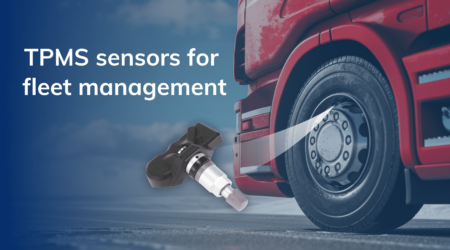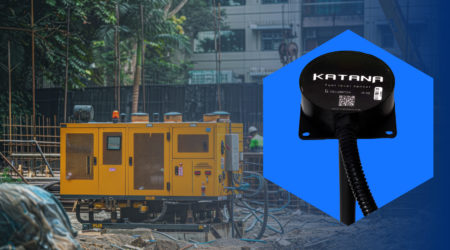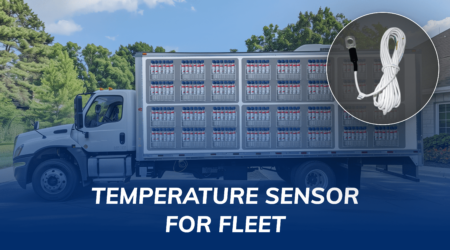Why Your Fleet Needs Tire Air Pressure Sensors

The Incident
As the truck carrying hazardous chemicals travels down the highway, the driver notices the vehicle becoming harder to control. Before they can react, one of the tires bursts due to underinflation, causing the truck to deviate uncontrollably. The sudden blowout leads to a chain reaction. The chemicals being transported spill onto the road, posing a severe risk to nearby traffic and the surrounding area. The accident causes a traffic jam, and emergency services are called to contain the spill and ensure the safety of everyone involved. The aftermath includes not only the immediate danger but also potential long-term environmental damage and costly cleanup efforts.
The Role of Tire Pressure Sensors
This unfortunate incident could have been avoided with the use of Tire Pressure Monitoring Systems (TPMS). TPMS sensors continuously monitor the air pressure in a vehicle’s tires and alert drivers and fleet managers if the pressure falls below a safe level. In this case, the sensors could have detected the underinflation issue before it led to a blowout. This would have allowed the driver to take corrective actions and avoid the accident taking place.
 The Benefits of TPMS
The Benefits of TPMS
Increased Safety: Proper tire inflation is crucial for keeping the vehicle stable, especially when transporting hazardous materials. TPMS ensures that tires are always at the right pressure, reducing the risk of blowouts and accidents.
Better Fuel Efficiency: Underinflated tires cause increased rolling resistance, which leads to higher fuel consumption. By keeping tires properly inflated, TPMS helps fleets save on fuel costs. This is particularly important when transporting heavy goods like chemicals.
Longer Tire Life: Tires wear unevenly when they are not properly inflated, leading to more frequent replacements. TPMS helps ensure even tire wear, which extends the life of the tires and lowers maintenance costs.
Real-Time Monitoring: TPMS provides real-time data on tire conditions, allowing fleet managers to monitor their vehicles remotely. This proactive approach enables quick response to potential issues. It helps prevent minor issues from turning into expensive repairs.
Compliance with Regulations: In many regions, using TPMS in commercial vehicles is not just a safety measure but a legal requirement. Following the rules ensures that fleets avoid fines and show commitment to safety and professionalism. This is essential in industries dealing with hazardous materials.
Data-Driven Decision Making: The data collected by TPMS can be used to optimize fleet operations. For instance, fleet managers can schedule the maintenance job more effectively, plan routes that minimize tire wear, and make informed decisions about vehicle usage.
Conclusion: A Necessary Investment
Investing in tire air pressure sensor is a strategic decision for any fleet, especially those transporting hazardous or heavy goods. These sensors provide essential safety benefits, improve fuel efficiency, extend tire life, and ensure compliance with regulations. The incident described above highlights the potential consequences of neglecting tire maintenance. By incorporating TPMS into fleet operations, companies can prevent accidents, protect their assets, and safeguard their reputation. In today’s world, where safety and efficiency are vital, TPMS (Tire Pressure Monitoring System) isn’t just a helpful tool—it’s an essential necessity.




